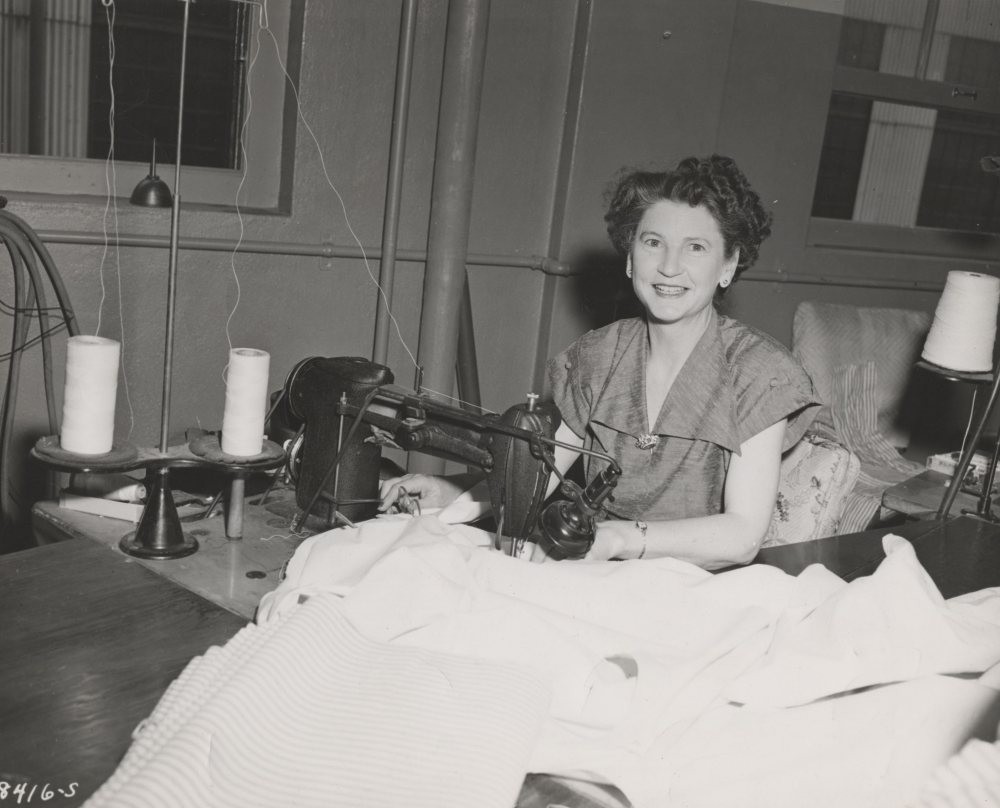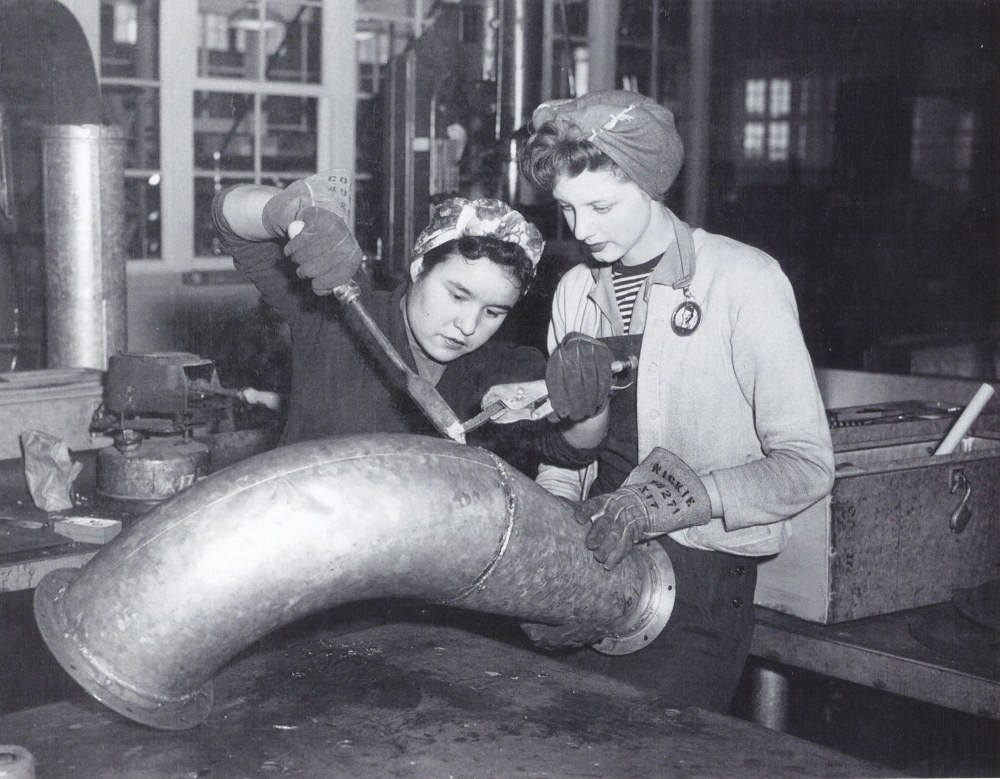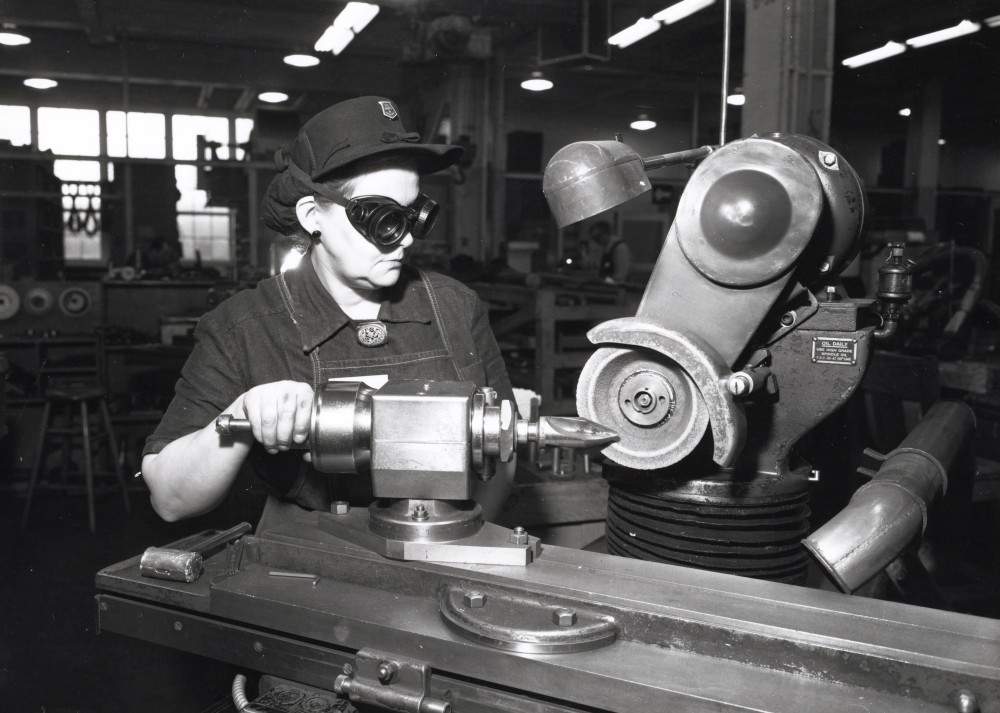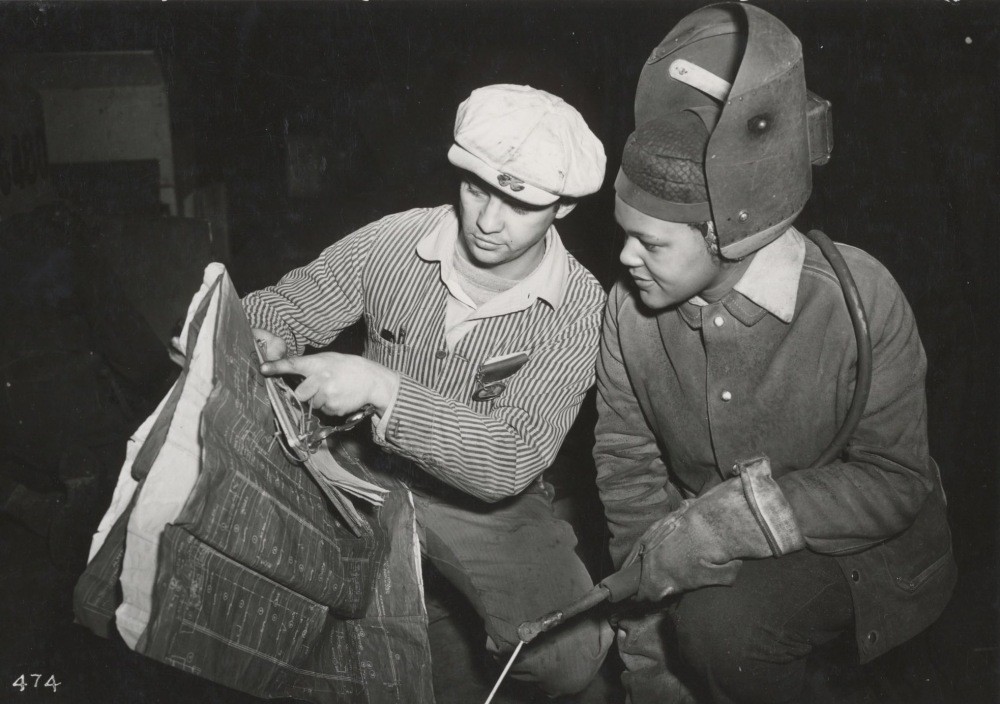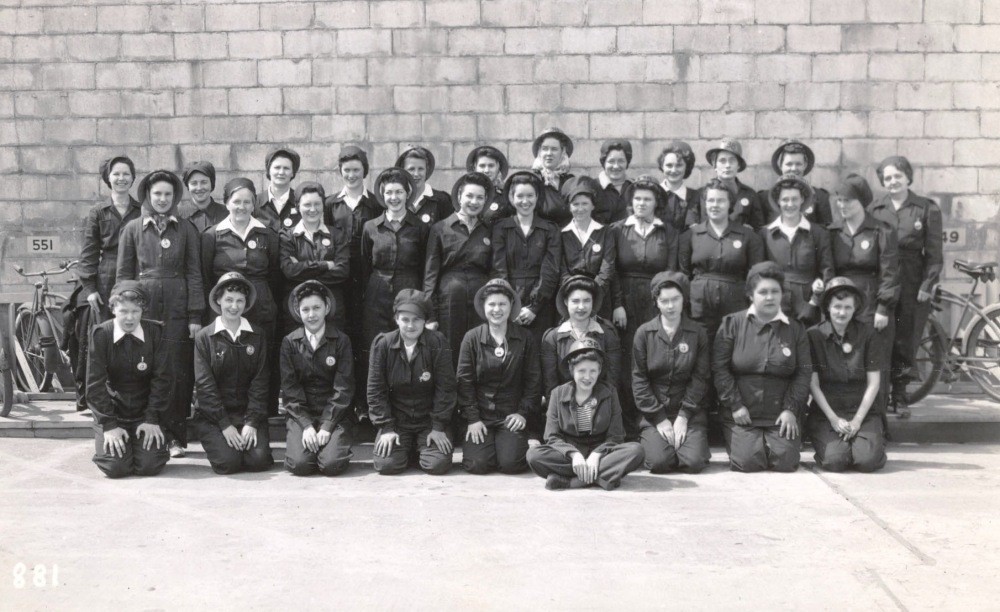World War II: Back to Work
After the Yeomanettes were dismissed from active duty in 1919, many continued to work at the Shipyard in Civil Service positions, some for many years.
In 1942, there were 80 women working in the industrial area. By December 1944, there were 4,266. Again, the wartime environment called women into the workforce and into the military. Building on the precedent set by World War I, many performed jobs that were previously reserved only for men, working as laborers, mechanics, chemists, and draftsmen.
At the Shipyard, they worked in 24 Shops. The supply shops, the Shipfitters Shop, the Rigger Shop and Central Tool had between 400 and 500 women on their payrolls. The Electric, Sheetmetal, Public Works Maintenance, Machine, Director, Pipe and Copper, and Paint Shops employed more than 100 women each.
In 1943, the first women welders were selected as full-fledged journeymen. By April 1944, 15 women had received leadingman ratings and by late summer of 1945, two women became quartermen laborers in Shop 72.
During the peak period of World War II Shipyard production, 50 percent of the workers in the Sail Loft were women, the largest percentage of female employees in any shop.
This Image shows Talma Holbert working in the Shop 72 Sail Loft, 1946.
Sheetmetal Shop 17 workers Pearl Sanchez and Mary St. Sauveur solder pipe, c. 1942-1945.
Shop 06 employee uses a countersink sharpening fixture, 1945.
A Shop 11 employee mentors a female welder trainee, c. 1942-1945.
A Shop 11 employee mentors a female welder trainee, c. 1942-1945.

